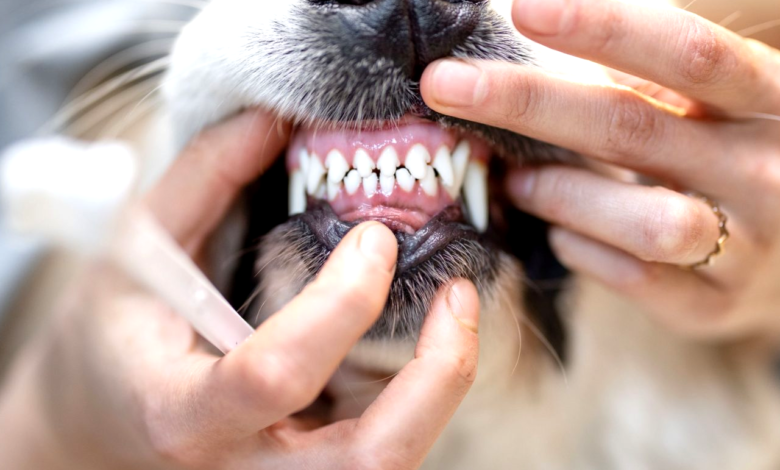
Dental Disease in Pets: Causes, Symptoms & Prevention
Dental disease in pets is one of the most common yet overlooked health issues affecting dogs and cats worldwide.
Dental disease in pets is one of the most common yet overlooked health issues affecting dogs and cats worldwide. Poor dental hygiene can lead to severe complications, including infections, tooth loss, and even systemic diseases affecting major organs like the heart, liver, and kidneys. As responsible pet owners, understanding the causes, recognizing the symptoms, and taking preventive measures are essential in ensuring the overall health and well-being of our beloved animals.
A pet’s oral health is a crucial aspect of their overall well-being, but unfortunately, many owners fail to recognize its importance. Regular dental care is necessary to prevent painful conditions such as gingivitis, periodontitis, and tooth abscesses, which can significantly impact a pet’s quality of life. By understanding the risks and implementing proper dental hygiene practices, pet owners can effectively prevent dental disease and promote a longer, healthier life for their furry companions.
Causes of Dental Disease in Pets
Dental disease in pets is primarily caused by poor oral hygiene, leading to plaque and tartar buildup. Plaque is a sticky film composed of food particles and bacteria that accumulate on the teeth. If not removed through regular brushing or professional cleanings, it hardens into tartar, which contributes to gum inflammation and periodontal disease. Several factors contribute to the development of dental disease in pets, including diet, lack of oral hygiene, breed susceptibility, age, genetics, and underlying health conditions.
Pets that consume soft or wet food without chewing on hard kibble or dental treats are more susceptible to plaque accumulation. The lack of mechanical scraping that occurs when chewing dry kibble allows bacteria and food particles to linger, promoting the development of tartar and leading to gum inflammation. Additionally, pets with poor oral hygiene habits—such as those that do not undergo regular brushing or receive dental cleanings—face a significantly higher risk of developing periodontal disease.
Certain dog and cat breeds are genetically predisposed to dental disease. Small dog breeds and flat-faced (brachycephalic) breeds such as Pugs, Bulldogs, and Persian cats tend to experience more dental issues due to their crowded or misaligned teeth, which create pockets where bacteria can thrive. Age is another critical factor, as older pets accumulate years of plaque and tartar buildup, making them more prone to gum infections and tooth decay. Furthermore, some pets inherit genetic conditions that predispose them to dental disease, necessitating stricter oral hygiene routines to mitigate these risks.
Underlying health conditions such as diabetes and autoimmune disorders can exacerbate dental issues by weakening the immune system and slowing the healing process of oral infections. Pets with these conditions require extra dental care to prevent complications. Overall, a combination of poor diet, lack of oral hygiene, genetic factors, and existing health conditions can contribute to the development of dental disease in pets.
Symptoms of Dental Disease in Pets
Recognizing the symptoms of dental disease early can prevent unnecessary pain and complications. Some of the most common signs of dental problems in pets include bad breath, excessive drooling, red or bleeding gums, difficulty eating, pawing at the mouth, loose or broken teeth, and visible plaque and tartar buildup.
Persistent bad breath is often the first and most noticeable sign of dental disease. The foul odor results from bacteria breaking down food particles in the mouth, producing sulfur compounds that cause halitosis. Pets suffering from dental disease may also drool excessively, sometimes with traces of blood, indicating inflammation or infection in the gums. Inflammation of the gums, also known as gingivitis, is another clear warning sign that periodontal disease is progressing.
Pets experiencing dental pain often struggle to chew their food properly. They may drop kibble, refuse to eat, or favor one side of their mouth while chewing. In severe cases, pets may completely avoid eating, leading to weight loss and nutritional deficiencies. Another telltale sign is pawing at the mouth or rubbing their face against furniture or the floor. This behavior suggests discomfort, often caused by a loose tooth, gum infection, or abscess.
Advanced dental disease can cause tooth loss, further complicating a pet’s ability to eat and leading to secondary infections. A yellow or brown buildup on the teeth signifies tartar accumulation, which, if left untreated, can lead to severe gum disease and eventual tooth loss. Recognizing these symptoms early allows pet owners to take action before the condition worsens.
Consequences of Untreated Dental Disease
Neglecting dental disease can lead to significant health complications beyond oral pain and discomfort. If left untreated, infections in the mouth can spread to other parts of the body, leading to severe conditions such as periodontal disease, tooth abscesses, systemic infections, and jaw fractures.
Periodontal disease is one of the most severe consequences of untreated dental issues. This condition causes the gums to recede, exposing the roots of the teeth and leading to deep infections that compromise the bone structure supporting the teeth. In advanced cases, periodontal disease can result in bone loss and eventual tooth loss, making eating painful and difficult for the pet.
Infected teeth can develop abscesses, which are painful pockets of pus that form around the roots of the teeth. These abscesses require immediate veterinary intervention, as they can lead to further infections and complications. Additionally, bacteria from infected gums can enter the bloodstream, causing systemic infections that affect vital organs such as the heart, kidneys, and liver. This condition, known as bacteremia, can be life-threatening if not treated promptly.
In small dog breeds, severe periodontal disease can weaken the jawbone, making it prone to fractures. This can be extremely painful and often requires surgical intervention to repair. Given the severe consequences of untreated dental disease, it is crucial for pet owners to prioritize their pet’s oral health through preventive care.
Prevention of Dental Disease in Pets
Preventing dental disease in pets requires a proactive approach, including daily home care and professional veterinary checkups. Regular brushing is the most effective way to prevent plaque buildup. Pet owners should use pet-safe toothpaste and a soft-bristled brush designed for dogs or cats. If a pet resists brushing, it is essential to introduce the process gradually, allowing them to get accustomed to the taste of the toothpaste and the sensation of brushing.
Diet plays a significant role in maintaining oral health. Some pet foods and treats are specifically designed to promote dental hygiene. Dental kibble and chews help reduce plaque and tartar by encouraging chewing, which naturally scrapes the teeth clean. Additionally, raw bones and natural dental chews, such as rawhide or coconut oil-infused treats, can help strengthen gums and maintain healthy teeth.
Routine professional dental cleanings by a veterinarian are also crucial in preventing severe dental disease. Veterinarians can remove stubborn tartar, address underlying issues before they become severe, and provide expert guidance on at-home dental care. Annual dental checkups are recommended for most pets, but some may require more frequent cleanings based on their breed, age, and oral health condition.
Water additives and oral rinses containing antibacterial agents can be beneficial in reducing plaque and freshening breath. These products are easy to use and can be an excellent addition to a pet’s oral hygiene routine. Chewing naturally cleans teeth and strengthens gums, so providing safe chew toys and treats is another effective strategy in preventing dental disease.
Regular veterinary checkups allow for early detection of dental problems. Veterinarians can assess a pet’s oral health, identify potential issues, and recommend treatments before the condition worsens. By combining at-home dental care with professional veterinary oversight, pet owners can effectively prevent dental disease and ensure their pets maintain healthy teeth and gums.
Read More: Flea Dirt on Dogs: A Comprehensive Approach to Identification, Treatment, and Prevention
Conclusion
Dental disease in pets is a serious yet preventable condition that affects their overall health and longevity. Understanding its causes, symptoms, and the importance of preventive care can make a significant difference in a pet’s quality of life. Poor dental hygiene leads to painful conditions and can contribute to systemic illnesses, making regular dental care essential. As pet owners, incorporating daily oral hygiene practices, providing proper dental diets, and scheduling routine veterinary visits can help maintain a pet’s oral health. By prioritizing dental care, we not only prevent discomfort and disease but also ensure that our furry friends live happy, healthy lives free from unnecessary pain.
FAQs
How often should I brush my pet’s teeth?
Ideally, you should brush your pet’s teeth daily. If that’s not possible, aim for at least three to four times a week to reduce plaque buildup.
Can dental disease in pets be reversed?
Early-stage dental disease, such as mild gingivitis, can be improved with proper oral hygiene. However, advanced periodontal disease requires professional treatment.
What are the best dental treats for pets?
Look for veterinarian-approved dental chews that help reduce plaque, such as those with a Veterinary Oral Health Council (VOHC) seal.
Are there signs that my pet is in pain from dental disease?
Yes, symptoms include reluctance to eat, excessive drooling, pawing at the mouth, bad breath, and visible tartar buildup.
When should my pet have a professional dental cleaning?
Most pets should have a professional dental cleaning once a year, but some may require more frequent cleanings based on their breed, age, and oral health condition.







